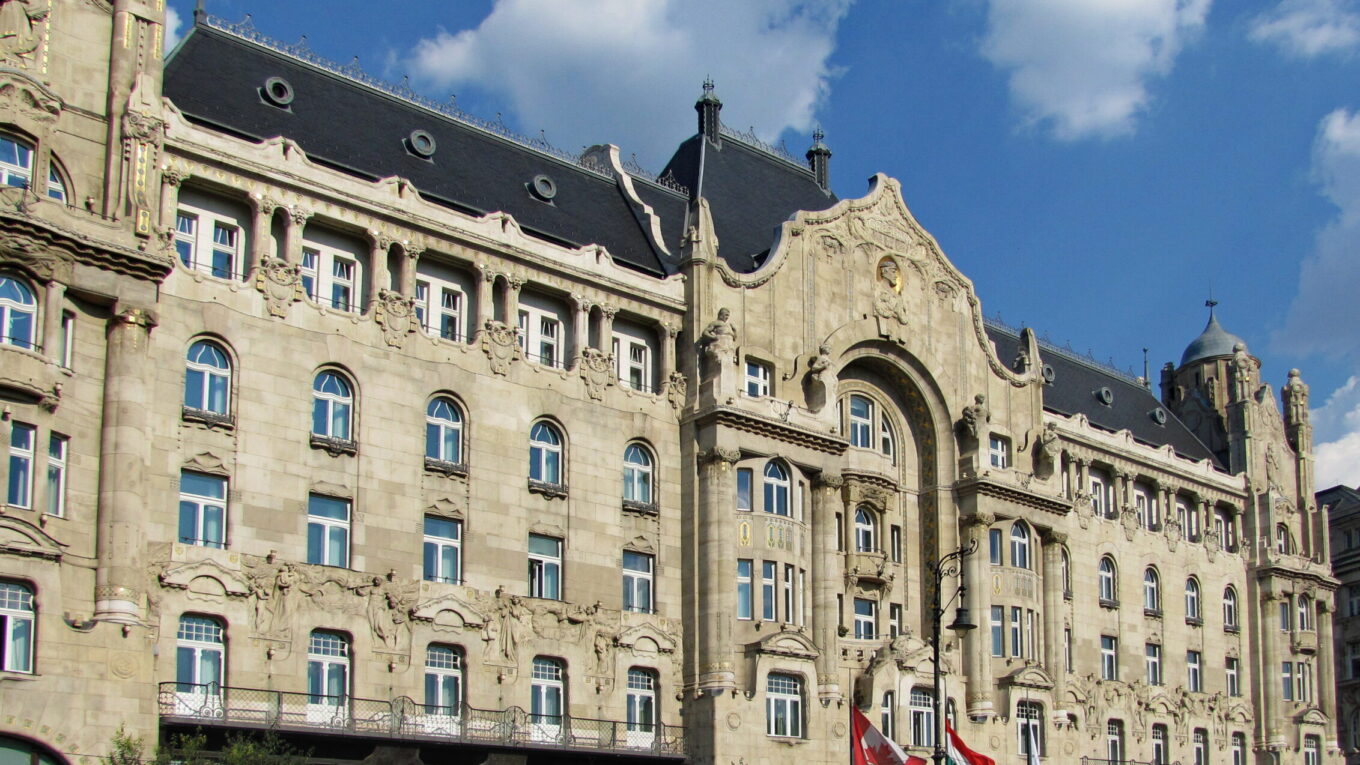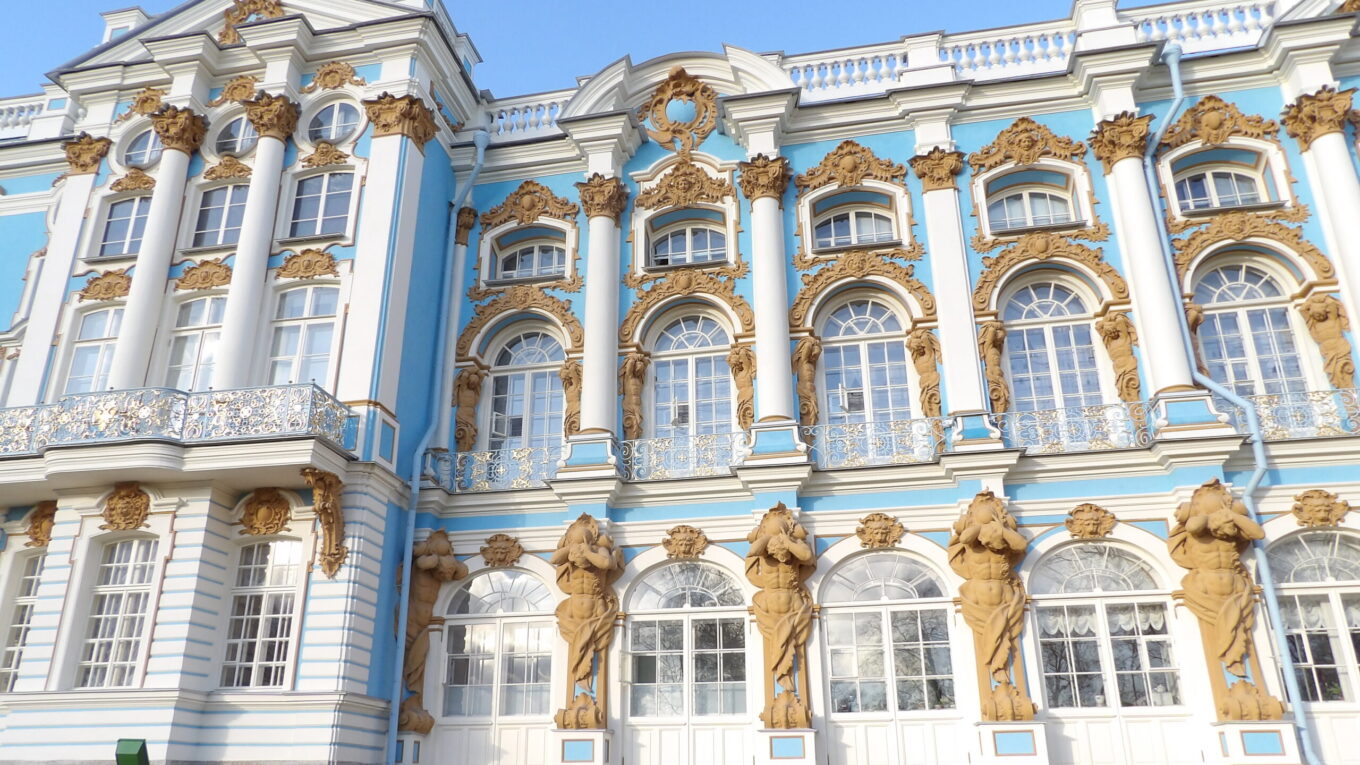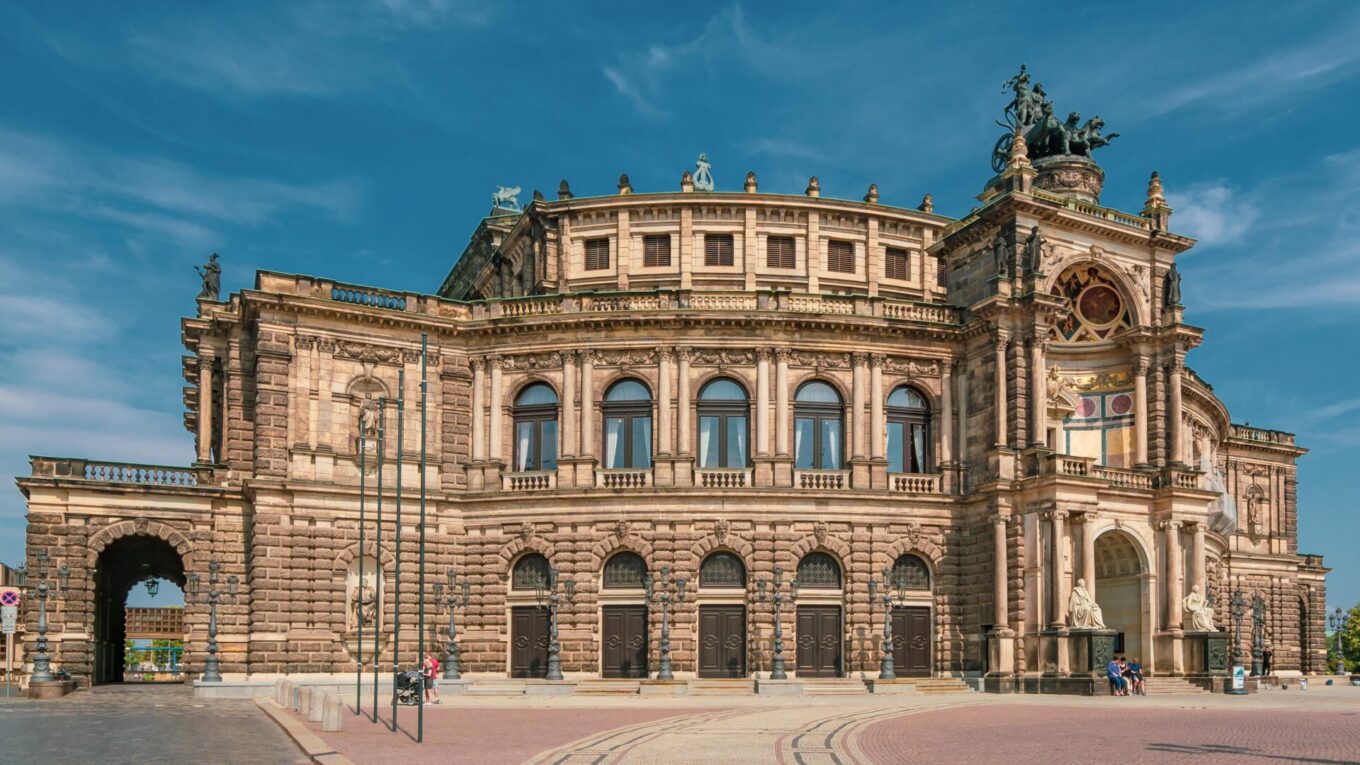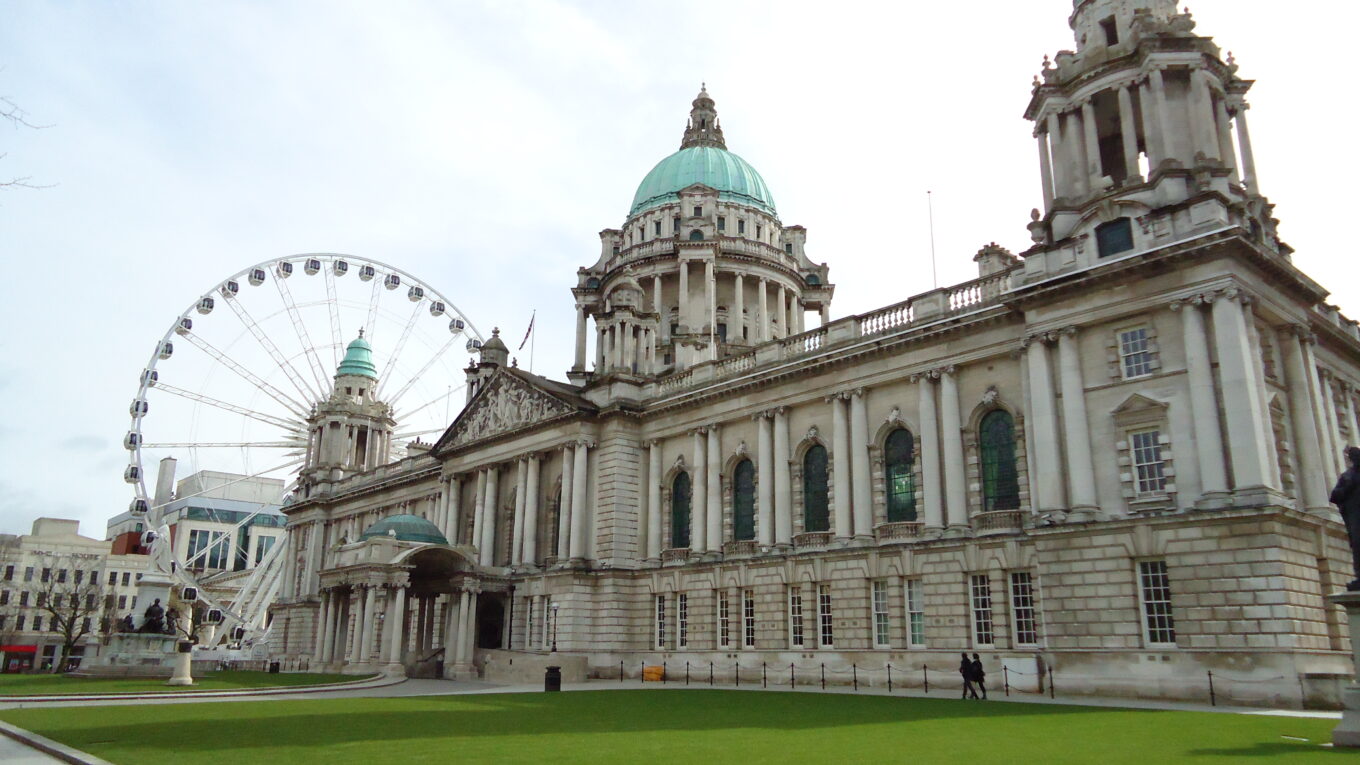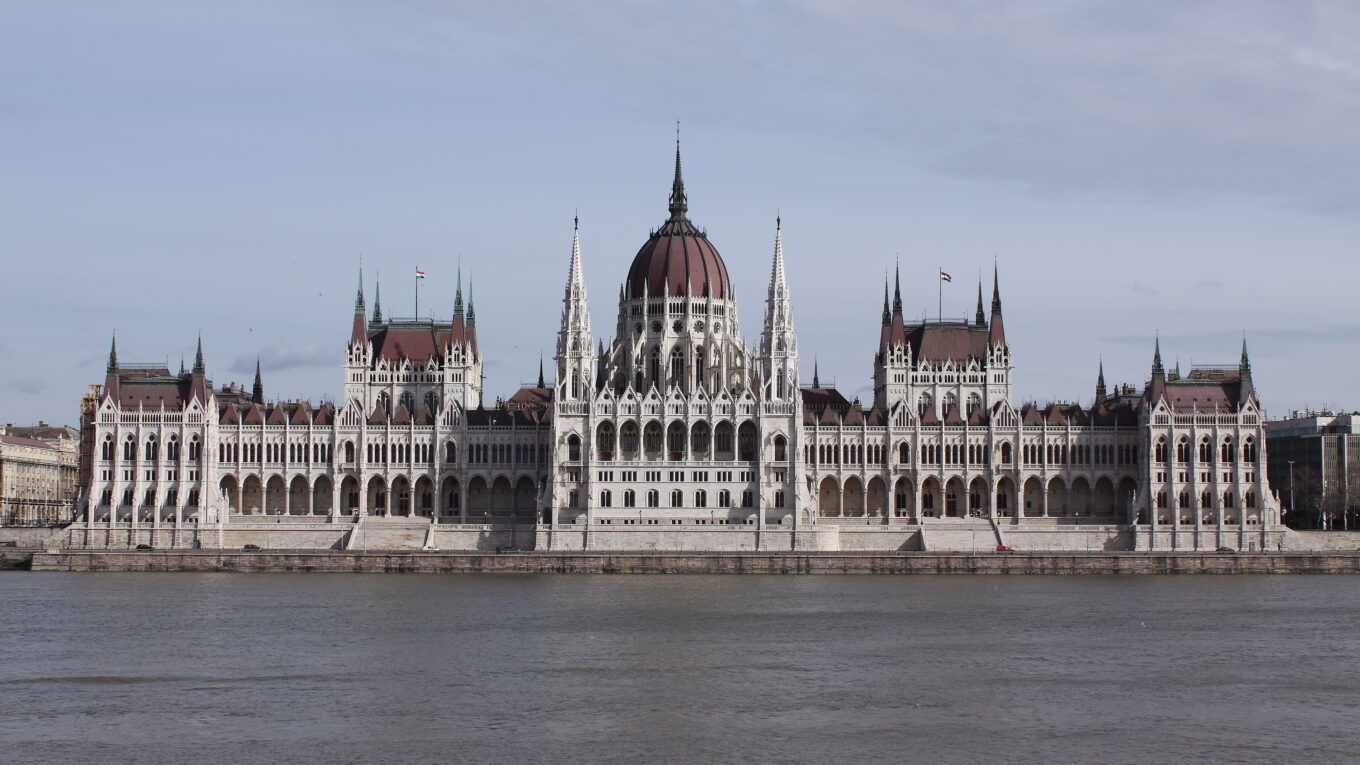Top 20 Examples of Art Nouveau Architecture
Art Nouveau was a movement in art & architecture that reached its peak in the early 1900s. It was particularly popular in European cities like Paris, Brussels, Vienna, and Prague. Art Nouveau Architecture is known for intricate curves, organic forms, and lavish materials. Many buildings from this period were designed with a holistic and all-encompassing approach. Many Art Nouveau Architects painstakingly coordinated every detail in a project, with items like door handles, lighting, and furniture all designed to interconnect. This article will list 20 of the world’s greatest examples of Art Nouveau Architecture and highlight the major elements & characteristics of this important style.
When was the Art Nouveau Period?
Art Nouveau Architecture was a popular building style that began in the 1890s and continued through the early 1900s. Some of the earliest examples of the Art Nouveau Style were several Brussels townhouses designed by Victor Horta.
Art Nouveau was also an important art movement, particularly in the fields of illustration, sculpture, and furniture design.
Alphonse Mucha was a Czech Artist known for his Art Nouveau imagery. He worked in Paris and Prague for much of his career and produced some of the period’s most iconic posters and advertisements.
Art Nouveau Architecture existed alongside other building styles, including Art Deco, Beaux Arts, and the Modernisme Style.
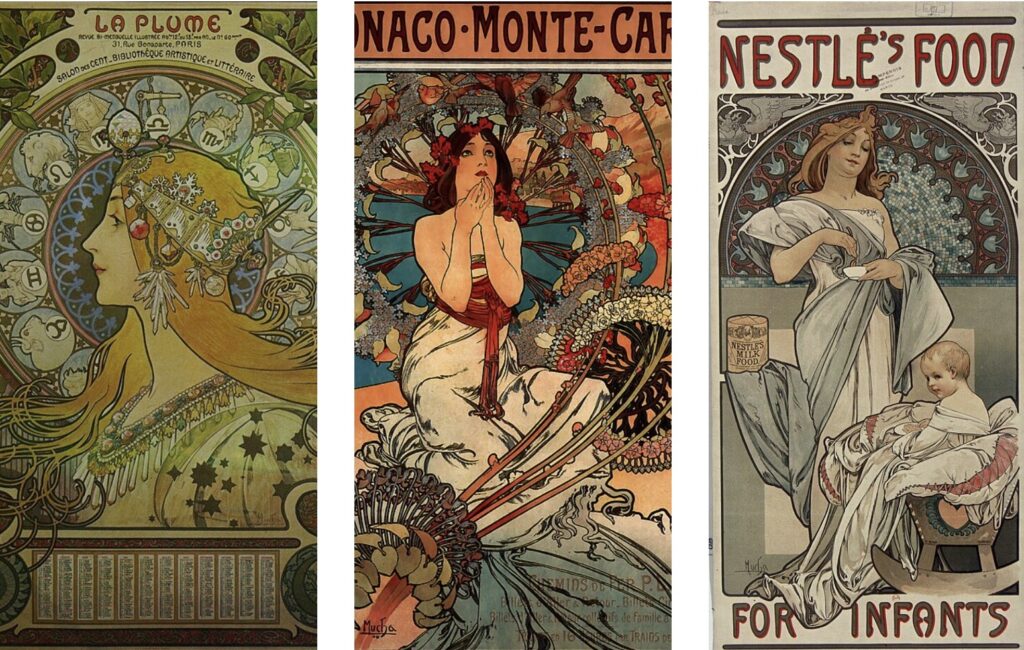
Elements of Art Nouveau Architecture
Organic Curving Forms

One of the most unifying elements in Art Nouveau Architecture is the use of intricate and complex curves. Many Art Nouveau features are reminiscent of plants and other organic materials. Leaves, branches, and roots are all used as inspiration leading to a final product that looks like it’s part of nature – rather than a manmade structure. An example of this can be seen in the image above at the Tassel House in Brussels, Belgium. Here the staircase, the railings, the column capitals, and the decorations on the walls all have a similar aesthetic.
Holistic Design

Holistic Design is another key characteristic of Art Nouveau Architecture. Many architects from this age meticulously coordinated every detail within the buildings they worked on. Items like light fixtures, signage, door hardware, and furniture were all bought together seamlessly. The images above show a series of design components found in different works of Art Nouveau Architecture. Tiffany Lamps were also very influential during the Art Nouveau Period, and many buildings on the list below were outfitted with similar light fixtures and glass components.
Wrought & Cast Iron
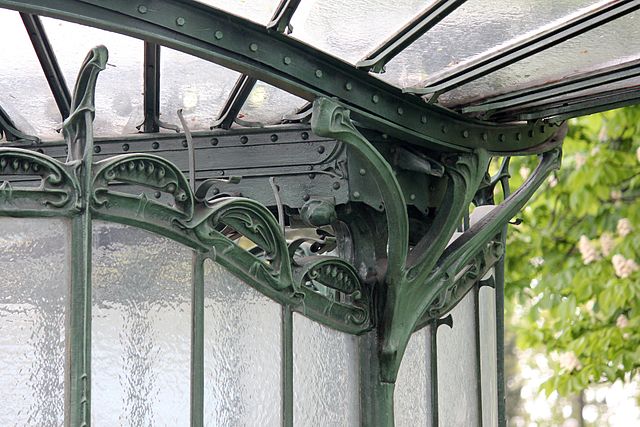
Wrought & Cast Iron is another design element found throughout countless works of Art Nouveau Architecture. While this type of metal on buildings was nothing new, iron designs reached their peak of intricacy and complexity during the Art Nouveau Period. The image above shows some iron elements within the canopy of a Paris Metro Station. Here the ironwork is fluid and sculptural, looking almost like vines supporting the glass above.
Art Nouveau Fonts, Mosaics, & Sculptures

Art Nouveau-styled fonts, Mosaics, and Sculptures are other elements found throughout Art Nouveau Architecture. The use of these characteristics is part of the holistic approach to design. The image above shows the main archway in the facade of the Prague Municipal House. The facade contains a prominent mosaic, which is surrounded by other sculptures and texts – all designed in the Art Nouveau Style.
Hand-Crafted Meticulous Details

Handcrafted details can also be found throughout many examples of Art Nouveau Architecture. Many objects were embellished with sculptural elements to give them an ornate and luxurious appearance. These intricate details are composed of the same curving language found throughout many Art Nouveau structures. The image above shows a lampost outside a house in Antwerp, Belgium. Here an everyday lamp is used as a major focal point on the facade, and much of the linework on this lampost repeats throughout the rest of the building.
What are the greatest examples of Art Nouveau Architecture?
Below is a list of 20 of the world’s greatest examples of Art Nouveau Architecture. The order of the buildings is based on their size, splendor, and overall influence on the evolution of the Art Nouveau Style.
1. Prague Municipal House – Prague, Czech Republic

One of the world’s most iconic examples of Art Nouveau Architecture is the Prague Municipal House. It was constructed from 1905-1912, and the plan of the building loosely corresponds with the former medieval walls that once enclosed Prague. The front facade of the Municipal House features several of the main elements in Art Nouveau Architecture, such as intricate ironwork and the use of lively and organic curves.

The exterior of the Prague Municipal House is also opulently decorated with Art Nouveau Artwork. There is an allegorical mosaic within the main front archway that is entitled Homage to Prague. There are also iron statues and an ornate dome made from glass, steel, and copper. Today, the building is used for a variety of functions, including an event space, and offices. The first floor of the Municipal House is also home to Prague’s most iconic cafe. The Kavárna Obecní dům is a storied coffee shop known for its Art Nouveau decor and furniture. Many people flock to the cafe to catch a glimpse of the ritzy lavish lives of the elite living in Prague during the age of Art Nouveau.
2. Gresham Palace – Budapest, Hungary
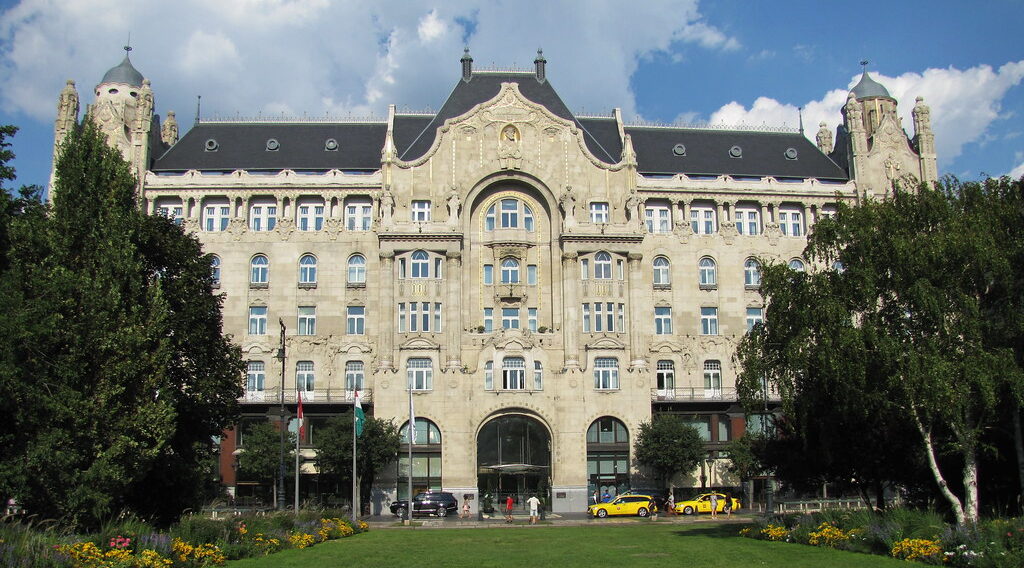
Gresham Palace is a lavish work of Art Nouveau Architecture located in the heart of Budapest. It was completed in 1906 and originally served a variety of functions including apartments and offices. Gresham Palace is in a prominent location in Budapest, right across from the Széchenyi Chain Bridge and the Danube River. In the early 2000s, the building was completely renovated and turned into a Four Seasons Hotel. Today it serves as one of the most luxurious hotels in all of Budapest, but despite the modern upgrades, Gresham Palace maintains all of its original Art Nouveau character.

Gresham Palace features a facade outfitted with many Art Nouveau-inspired sculptural elements and details. There are elliptical arches, gold trim, and lots of lively sculptures and statues. At night the facade is completely illuminated, and many of the building’s exuberant features can clearly be seen, Gresham Palace is one of several examples of Art Nouveau Architecture in Budapest, thanks in large part to the building boom that occurred in the city at the start of the 20th century.
3. Constanta Casino – Constanta, Romania
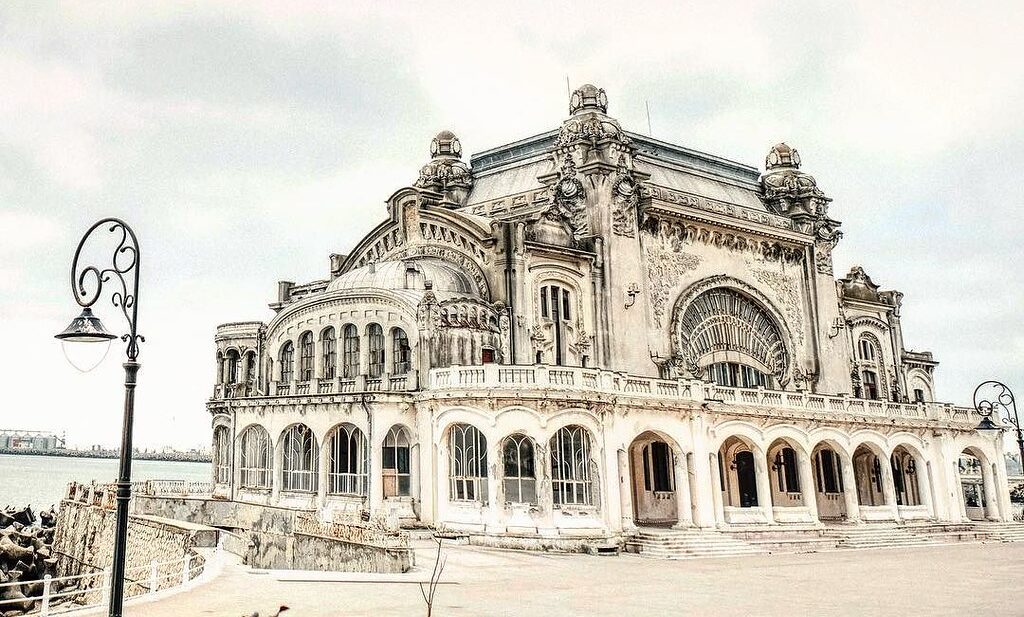
Constanta Casino is an impressive Art Nouveau Building located on the shores of the Black Sea in the Romanian city of Constanta. The casino opened its doors in 1910 and operated for several decades. Eventually, however, it closed down and the building fell into a gradual state of disrepair. Constanta Casino embodies the excess and lavishness of the early 1900s. The casino was designed holistically, with its exterior and interior combining the same aesthetic. The proximity to the sea also played a role in the building’s appearance, and many motifs such as seashells can be seen throughout.
4. Hôtel Tassel – Brussels, Belgium

Hôtel Tassel is regarded by many as the world’s first example of Art Nouveau Architecture. It was designed by Victor Horta in 1893 and was one of his earliest townhouses within Brussels. Horta used a variety of interconnected forms throughout the design of Hôtel Tassel. The image above shows the home’s main staircase, which is a fluid combination of wrought iron banisters and columns. The entire edifice contains fluid and organic curves, making it seem as if the house is made from natural vegetation. Today, several of Victor Horta’s designs in Brussels are protected as part of a UNESCO World Heritage Site.
5. Facades of Albert Street – Riga, Latvia

Albert Street is an 800-foot (243 m) long stretch of road located in the center of Riga, Latvia. It’s lined with several impressive examples of Art Nouveau Architecture, all constructed in a brief period from 1901-1908. The image above shows 8 Albert Street, one of the area’s finest structures. It was designed by Mikhail Eisenstein, a famed Art Nouveau Architect who was responsible for many different structures throughout Riga.
6. Cauchie House – Brussels, Belgium

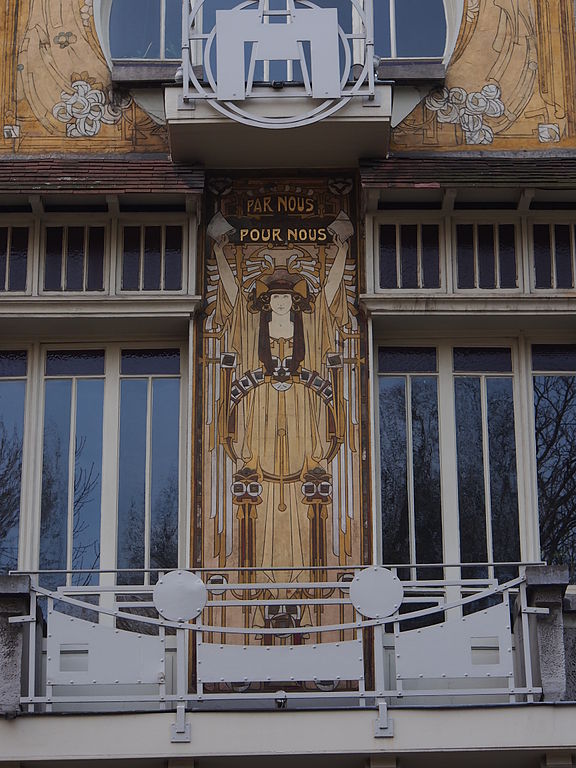
The Cauchie House is another prominent example of Art Nouveau Architecture in Brussels. It was completed in 1905 and is located close to the city’s famed Cinquantenaire Park. The Cauchie House contains some quintessential Art Nouveau imagery on its front facade, and it follows a similar format to many other townhouses in Brussels. The front elevation also contains influences from the Art Deco Style, which was popular throughout Europe and the United States around the same timeframe as Art Nouveau.
7. Livraria Lello – Porto, Portugal
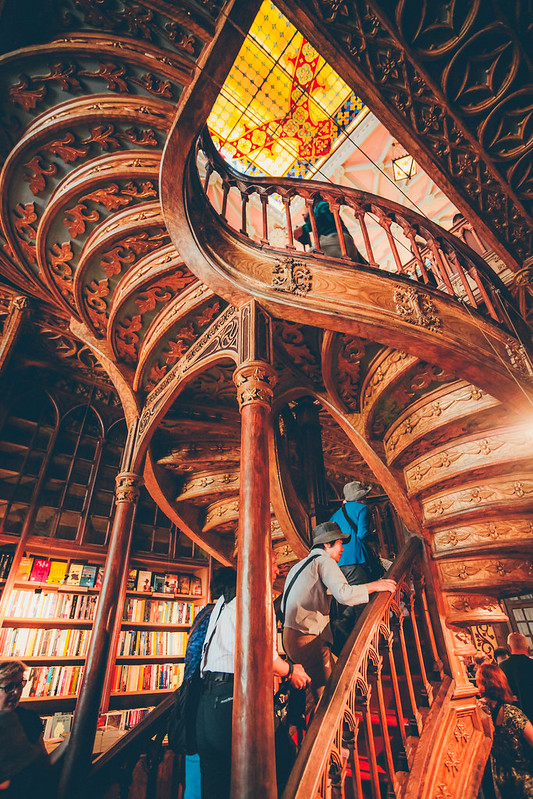

The Livraria Lello is a well-known bookstore located in the Portuguese city of Porto. The exterior was designed in the Gothic Revival Style and was completed in the late 19th century. The store’s interior is an amazing work of art that combines both Gothic and Art Nouveau Elements. The space contains Gothic Tracery and ribbed vaulted ceilings, paired with Tiffany-inspired stained glass. The bookstore also houses an iconic staircase that curves and spirals in a fluid and organic manner.
8. Bouillon Julien – Paris, France

Bouillon Julien is a restaurant located in the 10th arrondissement of Paris. The space has elaborate decor and is one of the greatest examples of the comprehensive approach to design found throughout Art Nouveau Architecture. Everything in the space, including the skylights, the light fixtures, and the trim work was coordinated to create a cohesive aesthetic. Even insignificant details, such as the hooks where people hang their coats, were designed to blend with the rest of the room.
9. Facades of Masarykovo Nábř – Prague, Czech Republic


One of the most notable streets in central Prague is the Masarykovo Nábř. This street overlooks the beautiful Vltava River, which splits the Old & New Portions of the city. Thanks to its picturesque location, this street was popular with the wealthy locals living in Prague during the early 1900s. Many notable families constructed townhouses on this road, and today the Masarykovo Nábř is lined with dozens of impressive Art Nouveau Buildings.
10. Singer House – St. Petersburg, Russia

The Singer House is one of the greatest examples of Art Nouveau Architecture in all of Russia. It was constructed as an office for the Singer Corporation, a prominent manufacturer of sewing machines in the early 1900s. The Singer House contains many of the key elements in the Art Nouveau Style, including fanciful sculptures and intricate ironwork. The building sits in a prominent location overlooking the Griboyedov Canal, and it is located near many of St. Petersburg’s other landmarks.
11. Entrances to the Paris Metro – Paris, France

During the early 1900s city officials commissioned architect Hector Guimard to design a collection of entrances to the Parisian Metro Network. Guimard utilized the Art Nouveau Style, which had emerged in this part of Europe only a few years earlier. The resulting collection of handrails, signage, and station canopies are some of the most iconic sights in modern-day Paris. The image above shows an overhead canopy at the entrance to Porte Dauphine station. The canopy uses an intricate, curving, and twisting iron frame – a typical characteristic of Art Nouveau Architecture.
12. Hôtel Hannon – Brussels, Belgium
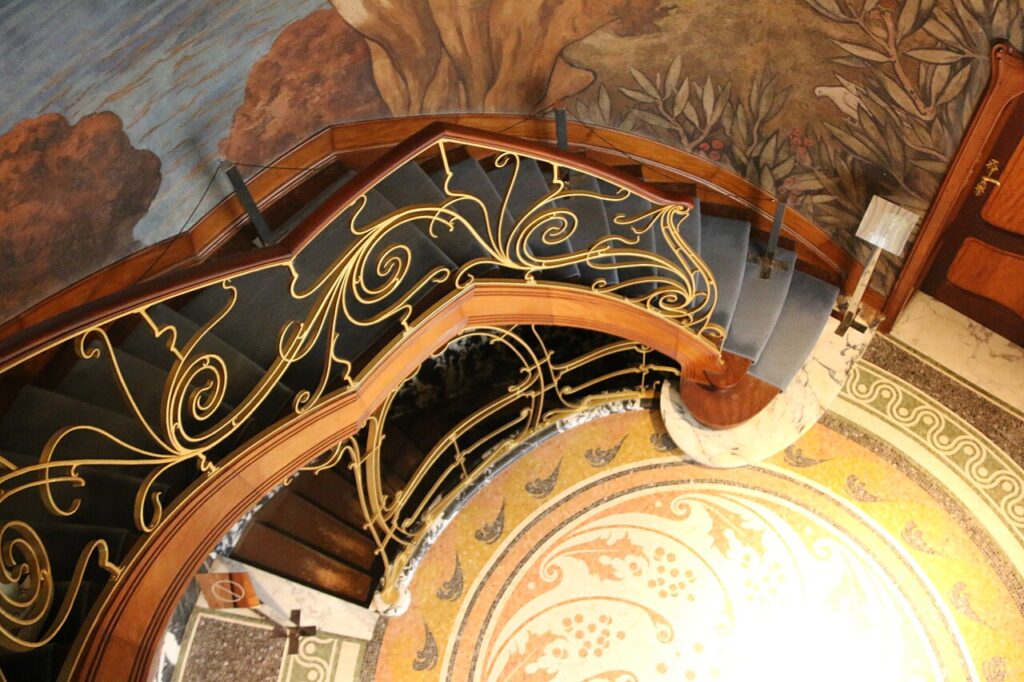
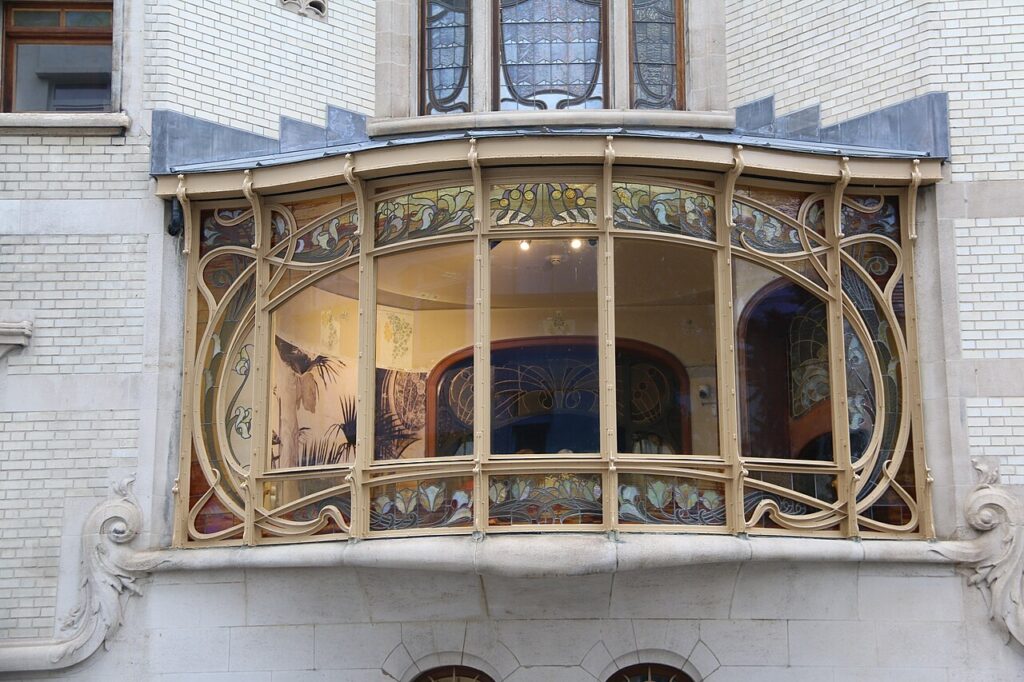
left & right photos by FrDr from Wikimedia Commons
Hôtel Hannon is one of several Art Nouveau residences in Brussels. Brussels saw a frenzy of construction during the early 20th century, and many of the city’s wealthy elite wanted lavish residences designed in the Art Nouveau Style. Hôtel Hannon was completed in 1904, and designed with similar motifs to many of the residences by Victor Horta. Hôtel Hannon contains stained glass, intricate wrought iron, and an elaborate curving staircase that is the focal point of the home’s entryway.
13. The Secession Building – Vienna, Austria

The Vienna Secession Building is an exhibition space that was constructed in the late 1890s. It’s an early work from the Vienna Secession Movement, an artistic ideology that emerged alongside the Art Nouveau Style. The building’s most distinct feature is its dome-like sphere which sits atop a large atrium. This sphere combines several of the typical elements of Art Nouveau Architecture. It’s composed of an intricate web of interconnected leaves, and it’s made from iron that has been embellished with gold leaf.
14. Museum of Applied Arts – Budapest, Hungary

The Museum of Applied Arts is one of several important works of Art Nouveau Architecture in Budapest. It was completed just before the Hungarian Millenium Celebration, which occurred in Budapest in 1896. Dozens of buildings were constructed specifically for this event, many of which were designed in the Revival Style. The Museum of Applied Arts is known for its colorful green roof. It also contains an eclectic blend of other elements borrowed from Mughal, Ottoman, and Moorish Architecture.
15. “Het Bootje” House – Antwerp, Belgium

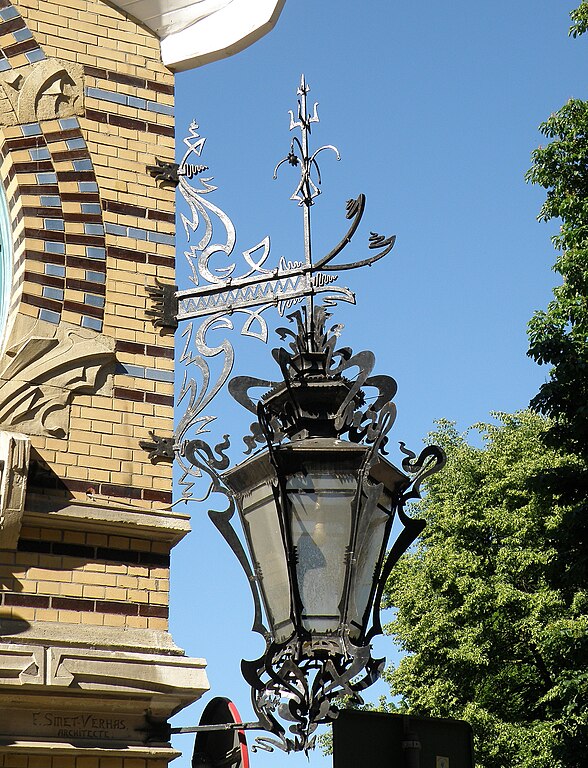
“Het Bootje” is a nickname given to one of Antwerp’s most notable Art Nouveau Buildings. The name translates to “the little boat” – which is a nod to the home’s iconic facade. The “Het Bootje” house was completed in 1901 during the peak of the Art Nouveau movement in Belgium. It contains many of the distinct elements found in Art Nouveau Architecture including intricate curves and sculptural canopies made from stained glass.
16. Majolikahaus – Vienna, Austria

The Majolikahaus is one of the more subdued examples of Art Nouveau Architecture on this list. The building is located in Vienna, just outside the city’s famous Ringstraße. While it doesn’t have the same complex and organic form as many other buildings on this list, the Majolikahaus bears an Art Nouveau-style mural on its main facade. The mural is reminiscent of the artwork of Alphonse Mucha, and it faces one of Vienna’s busiest streets.
17. Karlsplatz Station – Vienna, Austria

Another one of Vienna’s many examples of Art Nouveau Architecture is the Karlsplatz Station. This pavilion once marked the entrance to one of Vienna’s main metro stations. It was completed in 1899 but it stopped serving as a metro station entrance in the 1980s; Today the station remains a notable landmark in Vienna’s historic center, not far from other sites such as the Karlskirche and Vienna Opera House.
Like Architecture of Cities? Sign up for our mailing list to get updates on our latest articles and other information related to Architectural History.
18. Lavirotte Building – Paris, France
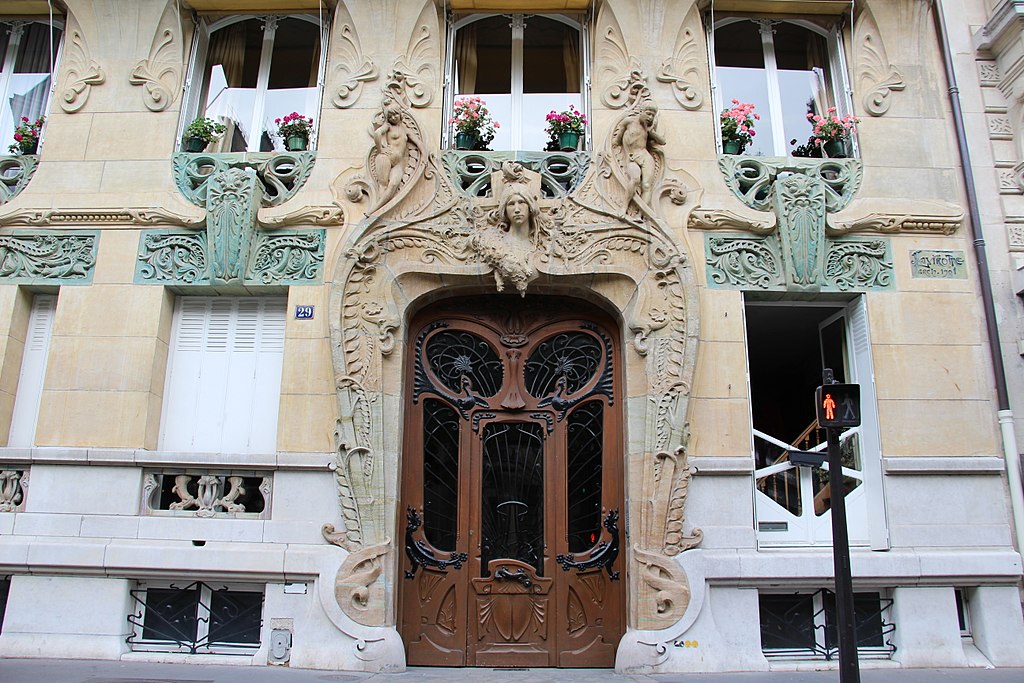

Left & Right photos by Fred Romero from Wikimedia Commons
The Lavirotte Building is an apartment complex that was completed in Paris in 1901. It’s one of the city’s many examples of Art Nouveau Architecture and was designed by the iconic architect Jules Lavirotte. The building embodies all of the typical characteristics of the Art Nouveau Style. The facade contains lots of elaborate and intricate curves, with many plant-like components. The building is located in Paris’ 7th arrondissement, just a short walk from the Eiffel Tower.
19. Maison du Peuple – Antwerp, Belgium
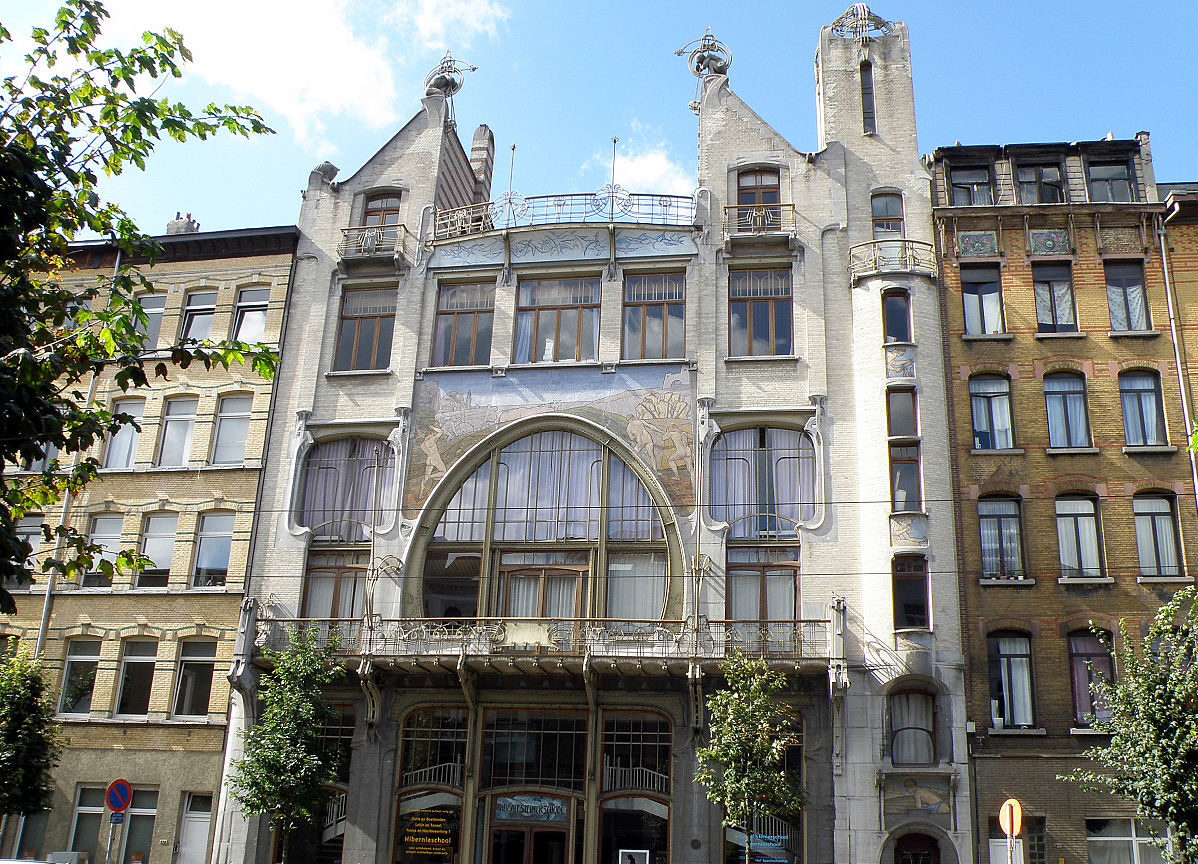
Like Brussels, Antwerp is a city in Belgium that contains several unique works of Art Nouveau Architecture. One of the city’s most influential Art Nouveau structures is the Maison du Peuple. It was completed in 1901 and was inspired by many of the notable townhouses designed by Victor Horta. Maison du Peuple has a front facade that contains a large colorful Art Nouveau Mosaic. The mosaic is situated around a large archway with a unique curve typical of the Art Nouveau Style.
20. Art Nouveau Residences of Brussels – Brussels, Belgium

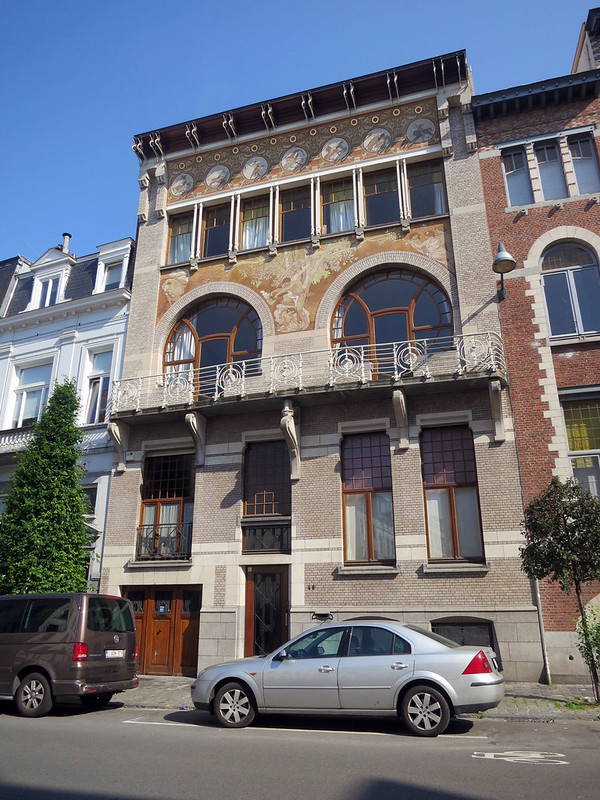

In addition to the other notable Art Nouveau Building in Brussels listed above, there are about a dozen other lesser-known examples. Many of the streets spreading out from the historic core of Brussels contain Art Nouveau Facades, most of which date from 1890-1910. The left image above shows the Pathé Palace an early form of Art Nouveau Architecture with a slight Art Deco influence. The center image shows Hôtel Albert Ciamberlani – a building designed by an associate of Victor Horta. The right image above shows the “Old England” building, which currently houses the Brussels Musical Instrument Museum.
The Modernisme Style
Art Nouveau Architecture existed alongside many similar styles. One example of this is Modernisme Architecture. The Modernisme movement was a form of architecture popular in the Spanish region of Catalonia. Modernisme Architecture utilizes many of the same elements as the Art Nouveau Style, with an even greater emphasis on natural forms, and handmade craftsmanship. Some of the most notable examples of Modernisme are in Barcelona, but the style can be found in other nearby cities such as Valencia, Zaragoza, and Palma de Mallorca.
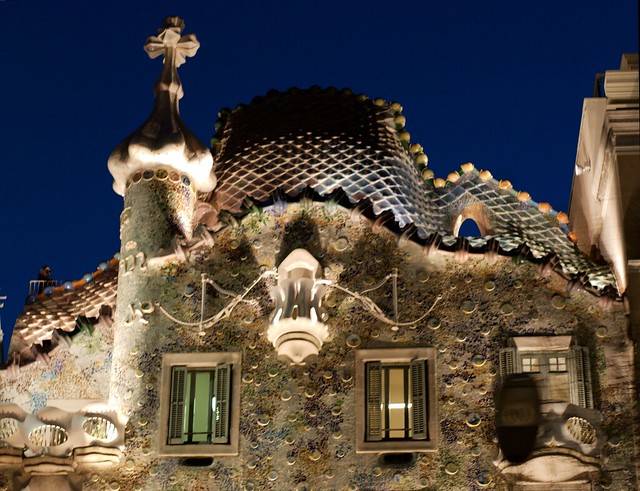

Antoni Gaudi was by far the most noteworthy architect who worked in the Modernisme style. He designed buildings almost exclusively in Barcelona and the surrounding region and is still a revered figure in Catalonian culture today. The images above show two of Gaudi’s most stunning buildings: Casa Batlo and the Sagrada Familia. Cassa Batlo is an impressive Modernisme residence located in Barcelona’s Eixample Neighborhood – and the Sagrada Familia is a massive church that has been under construction since 1882.
Art Deco & Beaux Arts Architecture
Art Nouveau Architecture also existed alongside similar styles from the late 19th & early 20th centuries.
Art Deco Architecture was also popular in Europe and the Americas around the same time as Art Nouveau. Art Deco Architecture was particularly utilized in skyscrapers like the Empire State Building and the Crysler Building. Art Deco designs feature a lot of straight and elongated lines, which greatly contrast the fluid curves found in many works of Art Nouveau Architecture.


Beaux Arts Architecture emerged a few decades before the Art Nouveau Period. Like with Art Nouveau Architecture, many Beaux Arts buildings are known for elaborate details and intricate geometries. The Beaux Arts Style, however, is much more connected to traditionalism and Classicism than Art Nouveau was. The image below shows the Opera Garnier in Paris. The Opera Garnier starts to utilize elliptical curves and other elements from the Art Nouveau Style, but it still greatly resembles historic works of Baroque Architecture.

Art Nouveau Architecture Today
Art Nouveau was an important movement in both art and architecture. Art Nouveau Design broke away from the traditionalism of the Revival Period and utilized a more innovative, fluid, and lively aesthetic. The Art Nouveau Style would emerge in cities like Brussels, Vienna, and Paris during the 1890s, and would become a flourishing architectural movement throughout Europe by the early 1900s. Art Nouveau Architecture remains highly influential in the modern age, and many people still draw from the holistic and comprehensive approach to design that was made famous during the Art Nouveau Period.

- About the Author
- Rob Carney, the founder and lead writer for Architecture of Cities has been studying the history of architecture for over 15 years.
- He is an avid traveler and photographer, and he is passionate about buildings and building history.
- Rob has a B.S. and a Master’s degree in Architecture and has worked as an architect and engineer in the Boston area for 10 years.
Like Architecture of Cities? Sign up for our mailing list to get updates on our latest articles and other information related to Architectural History.
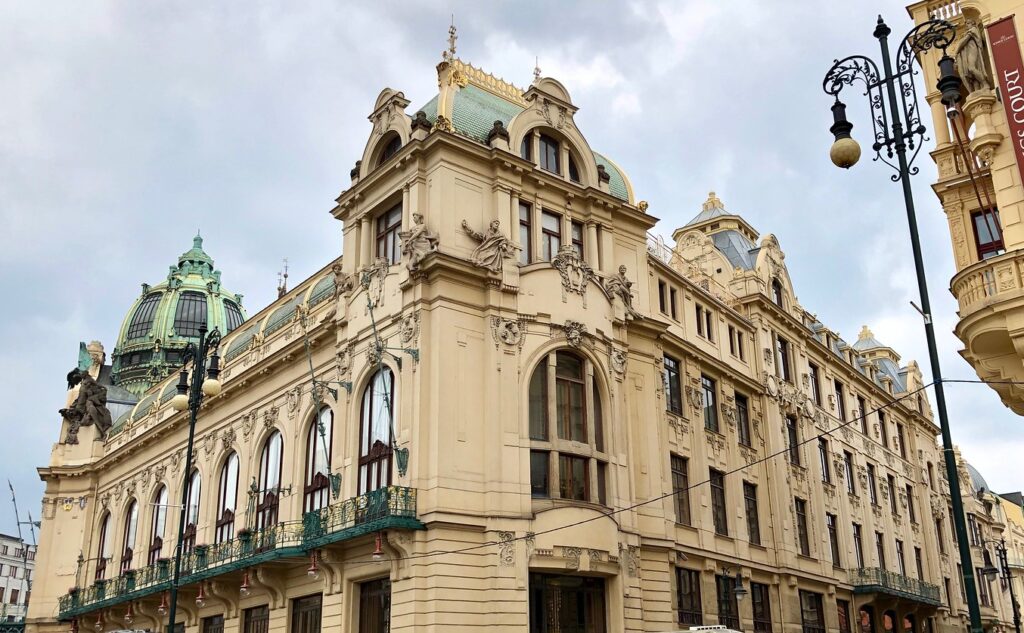
Another view of the Municipal House in Prague, Czech Republic
